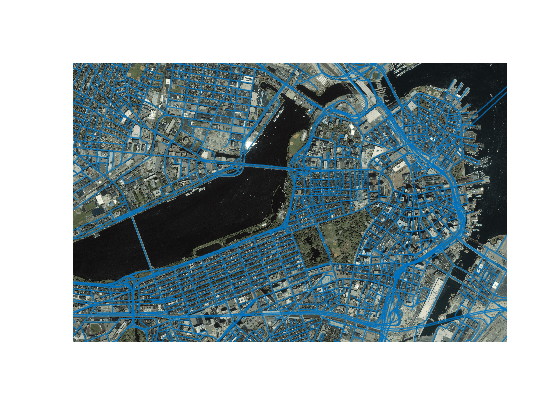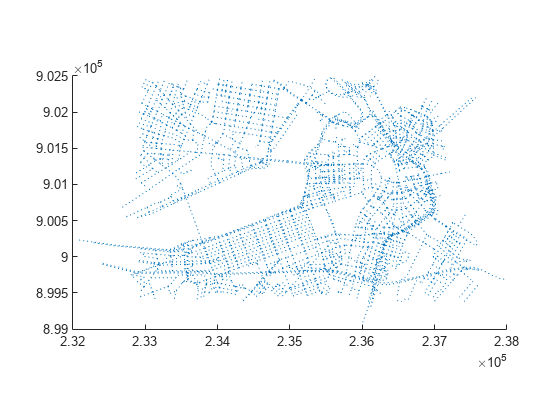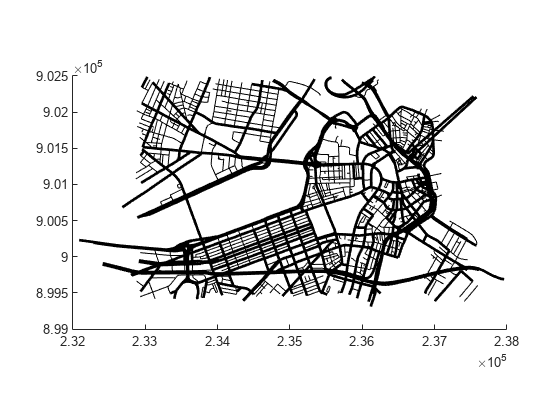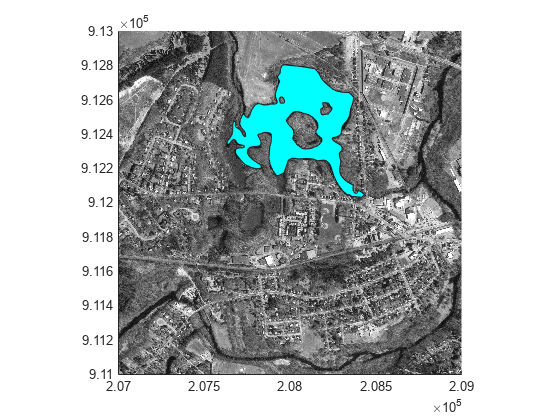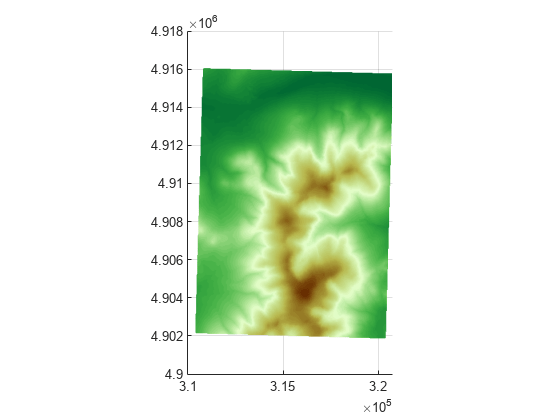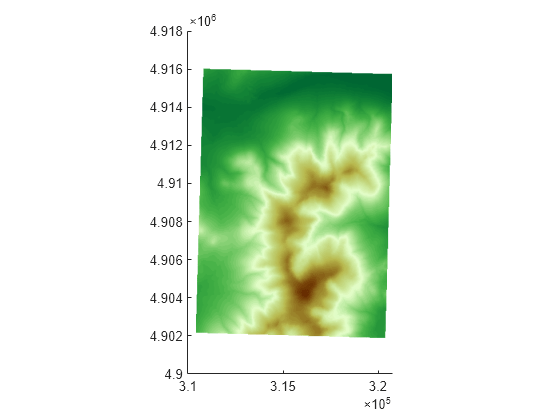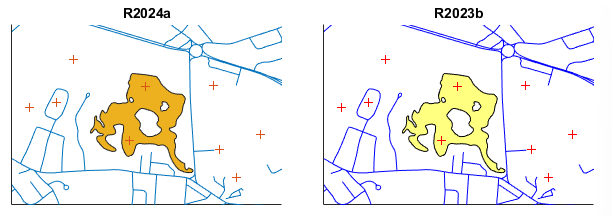mapshow
Display map data without projection
Syntax
Description
mapshow(
displays the coordinate vectors x,y)x and
y as lines. You can optionally display the coordinate
vectors as points or polygons by using the DisplayType
name-value pair argument.
mapshow( displays the vector
geographic features stored in S)S as points, multipoints,
lines, multilines, polygons, or multipolygons according to the geometry of
S.
You can optionally specify symbolization rules using the
SymbolSpec name-value pair argument.
mapshow(
displays a geolocated data grid, x,y,Z)Z. You can optionally
display the data as a surface, mesh, texture map, or contour by using the
DisplayType name-value pair argument.
mapshow(
displays a regular data grid, Z,R)Z, with referencing object
R. You can optionally display the data as a surface,
mesh, texture map, or contour by using the DisplayType
name-value pair argument. If DisplayType is
'texturemap', then mapshow displays
the image as a texture map on a zero-elevation surface (by setting
ZData values to 0).
mapshow(
display a geolocated image as a texture map on a zero-elevation surface. The
geolocated image can be a truecolor, grayscale, or binary image,
x,y,X,cmap)I, or an indexed image X with
colormap cmap. x and
y are geolocation arrays in map coordinates. Examples
of geolocated images include a color composite from a satellite swath or an
image originally referenced to a different coordinate system.
mapshow( displays data from
the file specified according to the type of file format.filename)
mapshow(___,
modifies the displayed map by using name-value pair arguments to set the
Name,Value)DisplayType and SymbolSpec
parameters. You can also use name-value pairs to set any MATLAB® graphics properties. Parameter names can be abbreviated, and case
does not matter.
mapshow( sets the
parent axes to ax,___)ax.
h = mapshow(___)
Examples
Input Arguments
Name-Value Arguments
Output Arguments
Tips
If you do not want
mapshowto draw on top of an existing map, create a new figure or subplot before calling it.You can use
mapshowto display vector data in anaxesmfigure. However, you should not subsequently change the map projection usingsetm.If you display a polygon, do not set
'EdgeColor'to either'flat'or'interp'. This combination may result in a warning.

